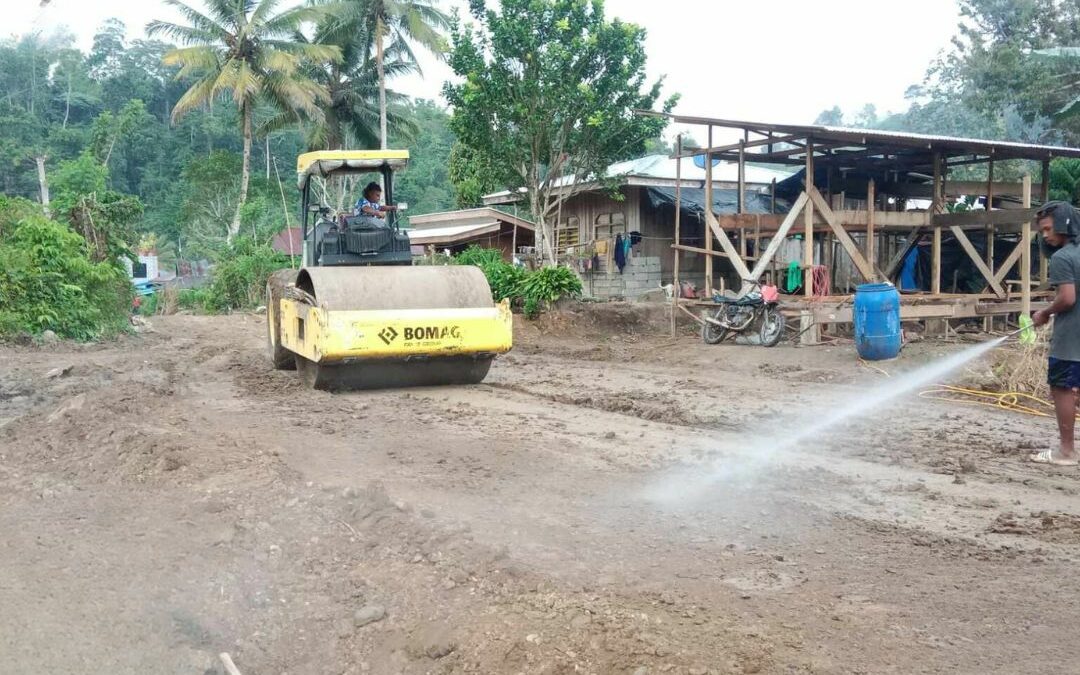Soil stabilization refers to the process of improving the engineering properties of soil to enhance its strength, durability, and resistance to various factors such as erosion, weathering, and traffic loading. This is typically done to make the soil suitable for road construction purposes or to prevent environmental degradation.
Here are the types of soil stabilization
Chemical Stabilization: Adding chemicals such as lime, cement, or polymers to the soil to alter its properties and improve stability.
Mechanical Stabilization: Using mechanical means such as compaction or reinforcement with materials like geotextiles or grids to increase soil strength.
Biological Stabilization: Utilizing vegetation or biological processes to stabilize soil, such as through the use of erosion control mats or planting vegetation to prevent erosion.
Soil stabilization is crucial in civil engineering and road construction projects. It can also be essential in environmental conservation efforts to prevent soil erosion and degradation.
Compaction and stabilization of soil in road construction
 In road construction, compaction is a crucial process aimed at enhancing the strength, stability, and durability of the road foundation.
In road construction, compaction is a crucial process aimed at enhancing the strength, stability, and durability of the road foundation.
Compaction involves reducing the air voids in the soil by applying mechanical force, typically through heavy machinery like compactors or rollers. This process increases soil density and improves its load-bearing capacity. Compacted soil offers several benefits for road construction:
Improved Load-Bearing Capacity: Compacted soil can bear heavier loads without significant deformation, reducing the risk of road failure.
Reduced Settlement: Properly compacted soil experiences minimal settling over time, maintaining the road’s even surface and preventing potholes or unevenness.
Enhanced Drainage: Compaction helps create a more uniform soil structure, improving drainage and reducing the risk of water accumulation, which can weaken the road foundation over time.
Better Stability: Compacted soil provides a stable foundation for subsequent layers of road construction materials, such as gravel, asphalt, or concrete.
Compaction is essential in road construction as it ensures a stable foundation that can withstand the loads and stresses imposed by traffic and environmental factors, ultimately contributing to the longevity and performance of the road.
Understanding Factors affecting Soil Stabilization for Roads
Several factors influence soil stabilization in road construction and civil engineering projects. Key considerations include:
Soil Type: Tailoring stabilization methods to soil properties like cohesion and permeability.
Moisture Content: Optimal levels ensure proper compaction and chemical effectiveness.
Climate: Weather impacts, like heavy rainfall, affect stabilization efforts.
Traffic Loads: Stronger stabilization is needed for heavier traffic.
Materials and Techniques: Choosing additives and methods based on cost, availability, and project needs.
Quality Control: Ensuring proper compaction and material application during construction.
Environmental Concerns: Mitigating impacts like contamination and erosion.
Long-Term Maintenance: Regular inspections and upkeep ensure stability over time.
Successful soil stabilization demands a thorough understanding of these factors to apply appropriate techniques for lasting results.
Revolutionizing Infrastructure: Soil Stabilization in Civil Engineering
Soil stabilization in civil engineering encompasses a diverse array of techniques aimed at enhancing the engineering properties of soil to meet the demands of construction projects. These methods entail the utilization of various soil stabilizing agents to tackle specific soil challenges. When addressing expansive soil, stabilization strategies are designed to mitigate its tendency to swell and shrink, often involving the application of chemical stabilizers or implementation of moisture control measures. Similarly, stabilization of soft soil involves specialized techniques to bolster its strength and stability, such as deep compaction or the incorporation of reinforcement materials. Meanwhile, stabilizing sandy soil focuses on improving cohesion and load-bearing capacity, typically through compaction or the addition of binding agents. Each approach is meticulously tailored to the unique characteristics of the soil and project requirements, ensuring the establishment of robust and enduring foundations for infrastructure development.
In the principles and practice of soil stabilization, key considerations include:
- Understanding soil characteristics
- Selecting the appropriate stabilization method
- Ensuring optimal moisture content
- Achieving proper compaction
- Uniform application of stabilization materials
- Implementing quality control measures
- Considering environmental impacts
- Planning for long-term performance and maintenance
These principles, central to effective soil stabilization practice, guide the enhancement of soil properties and the establishment of durable foundations for construction projects. By adhering to these guidelines, engineers ensure that structures can withstand various loads and environmental stresses. They emphasize meticulous planning, execution, and environmental awareness, fostering sustainable infrastructure development.
Understanding Soil Stabilization Costs in the Philippines
The cost efficiency of soil stabilization in the Philippines can vary depending on the road design and what type of project it would be whether it is for a private company or for a government agency. For private soil stabilization projects, we have 3 layers of base foundation for an all weather road, farm access road or concreted road. Subgrade being the first layer or what we often call as “panambak”, then we have the second layer which is the sub base material and the last layer being the base course material. With the application of soil stabilization, we can get rid of one of the layers of the base foundation whether it be the sub base or base course material but mostly in the Philippines, due to the reason that base course is more expensive than the sub base, it is recommended to get rid of the base course and apply the soil stabilizer to the sub base instead.
With one layer out, we can achieve 30% of materials cost savings already not to mention that we can also add more savings in terms of PCCP thickness. For reference, the standard thickness that is being used by most private construction companies would be 8 inches. With soil stabilization, we can go down to 6 inches of PCCP and that would give additional savings as well. The logic behind it is that why would we need for a thick PCCP if the base foundation is already stabilized? One of the main reasons why our concreted roads doesn’t last long is because of base failure and pumping action. Base failure often occurs because of the water seepage underneath our base and by stabilizing it, we can mitigate these problems to maximize the pavement life of our concreted roads.
Furthermore, government projects would be different in terms of cost savings as they have a specific and standard design for every road project whether it is a farm to market road, barangay road, access road or bypass road. It is important to highlight that for these kind of projects, soil stabilization involves initial investment, it often translates into long-term cost savings. By strengthening the soil and mitigating potential issues, soil stabilization can significantly reduce the need for road rehabilitations and maintenanace. Moreover, the enhanced stability provided by soil stabilization can maximize the lifespan of infrastructure, leading to substantial savings over time.

